Street Fight: Why Are There Three Broadways in Manhattan?
Broadway is arguably the most famous street in New York City. It’s synonymous with the Theater District; it runs from the southern tip of Manhattan all the way up to Westchester County; and it’s the oldest north-south thoroughfare in NYC. While we might not all know these fun facts about the street, we undoubtedly know a thing or two about Broadway and its nonconformity to the street grid. But did you know there’s also a West Broadway in Tribeca/Soho and an East Broadway on the Lower East Side/Chinatown? They’re not extensions of Broadway proper, so how did they receive their monikers?
Let’s start with the history of good old Broadway, which was the original Native American foot path on the island. Known as Wickquasgeck Trail, it ran the length of Manhattan along swamps and rocky land. When the Dutch arrived and renamed the island New Amsterdam, they used the path as their main road, calling it Heerestraat. The English then renamed it Broadway.
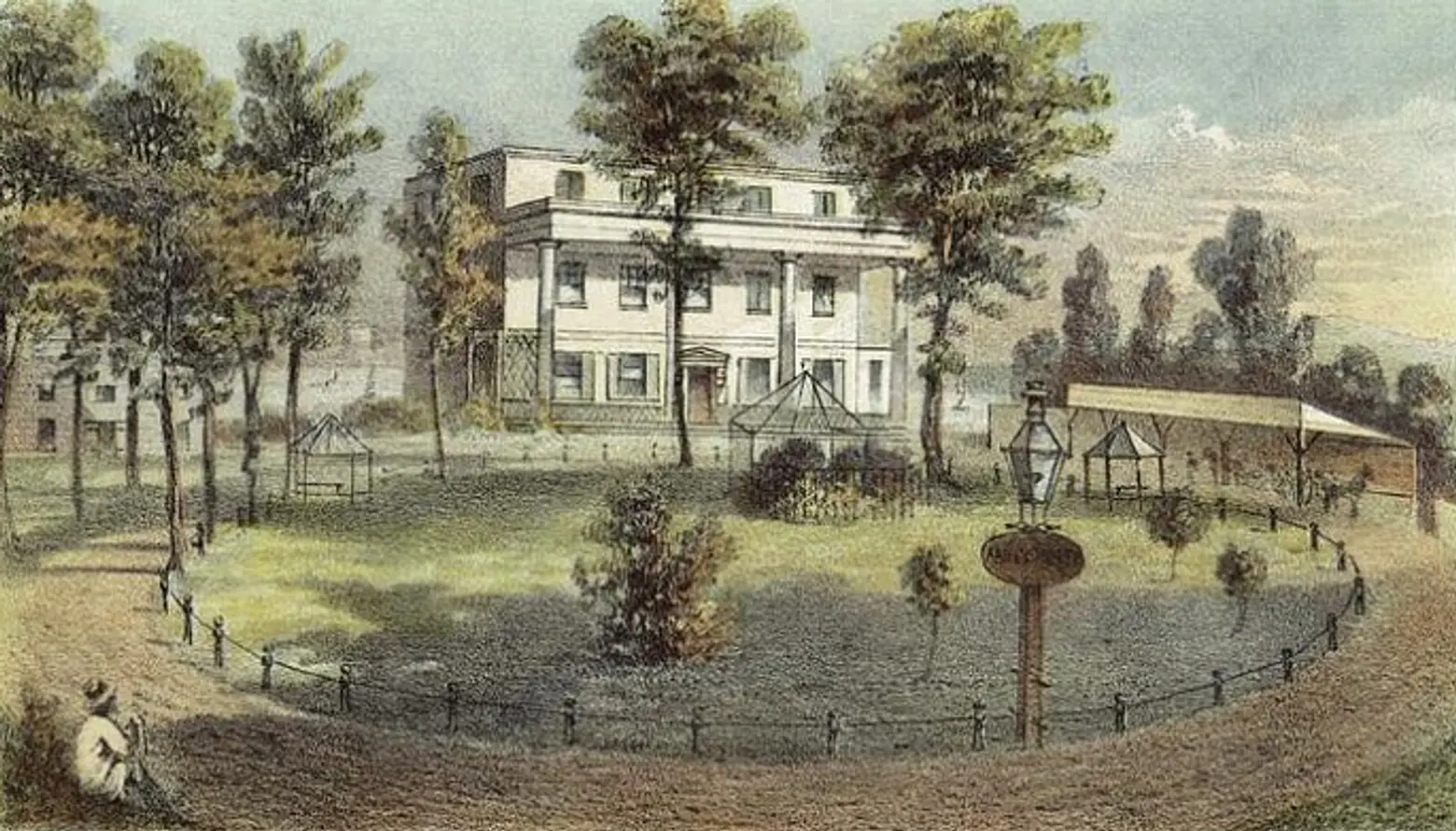
The Old Abbey Hotel on Bloomingdale Road in 1847 via NYPL
In the 18th century, Broadway terminated just north of Wall Street. Traffic continued up the east side via Eastern Post Road and the west side via Bloomingdale Road (in Dutch, Bloemendaal meant “valley of flowers”). In 1899, after being widened and paved, Bloomingdale Road was connected to and became an extension of Broadway. Until 1957, Broadway was a two-way street for its entire length, but since then it’s gone through several different traffic modifications, including being closed to vehicles entirely from 35th to 42nd Streets in 2008. Most New Yorkers think of Broadway as solely a road in Manhattan, but it actually passes through the Bronx and all the way into Westchester, where it becomes Route 9 and almost hits the Canadian border.
East Broadway intersects Chinatown and the Lower East Side. It runs from Chatham Square eastward under the Manhattan Bridge, past Seward Park, and ends at Grand Street. The street was first spotted on maps around 1732 when it was a lane that ran through the property of brewer Herman Rutgers (the same reason why there’s a Rutgers Street nearby). In 1830, it was officially named East Broadway.
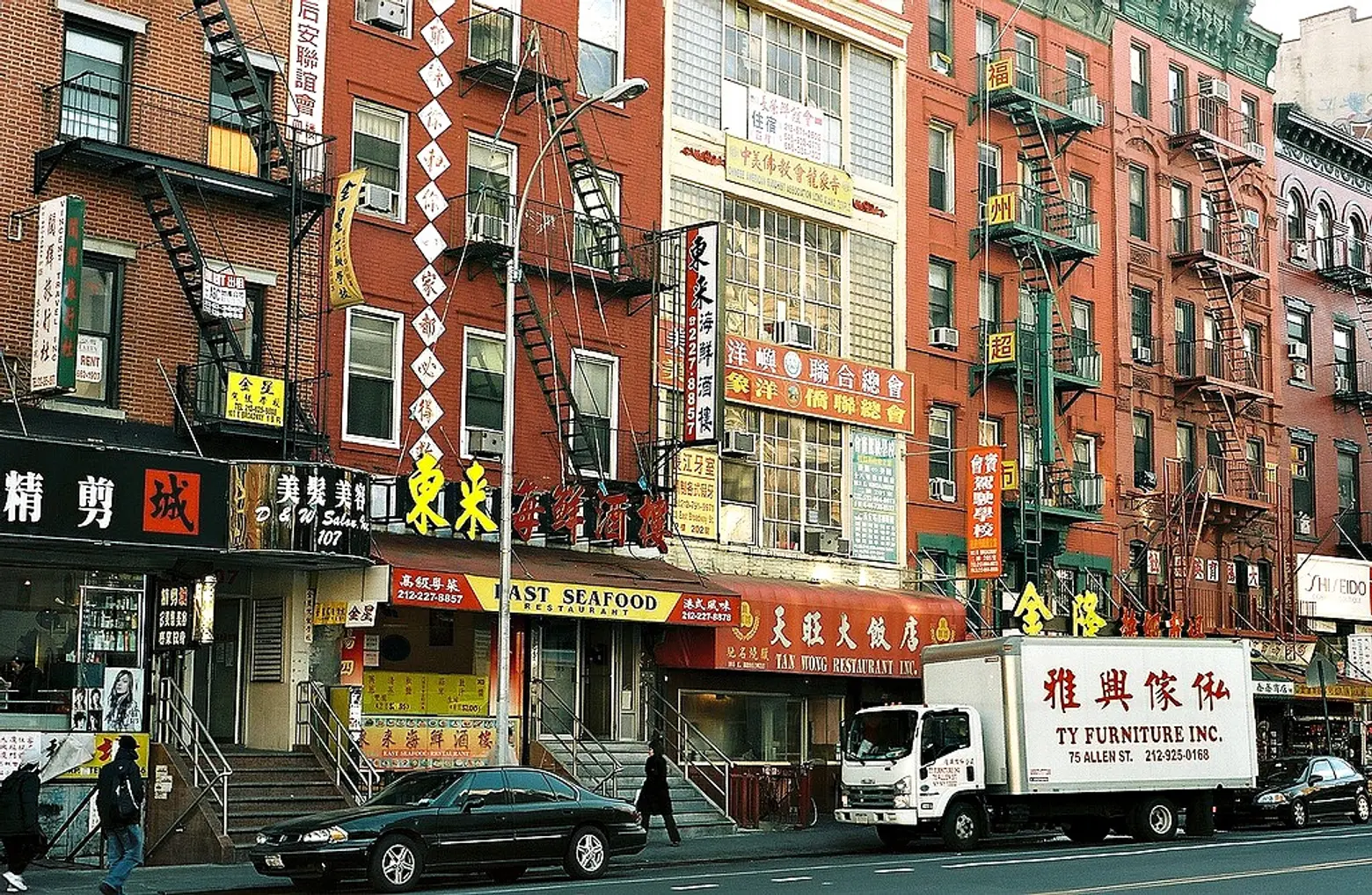 East Broadway via Kilgub via photopin cc
East Broadway via Kilgub via photopin cc
Beginning in the 1960s, a large number of immigrants from Hong Kong began settling on East Broadway as the border of Chinatown expanded. In the ’70s and ’80s the street became thought of as an extension of the Bowery, with people scared to venture along it for fear of crime. But by the end of the ’80s, another group of Chinese immigrants from the capital city of Fuzhou in the Fujian province flocked to East Broadway, garnering it the names Little Fuzhou or the New Chinatown. The portion of the street that runs through Chinatown today is still a main hub for the Fuzhou people.
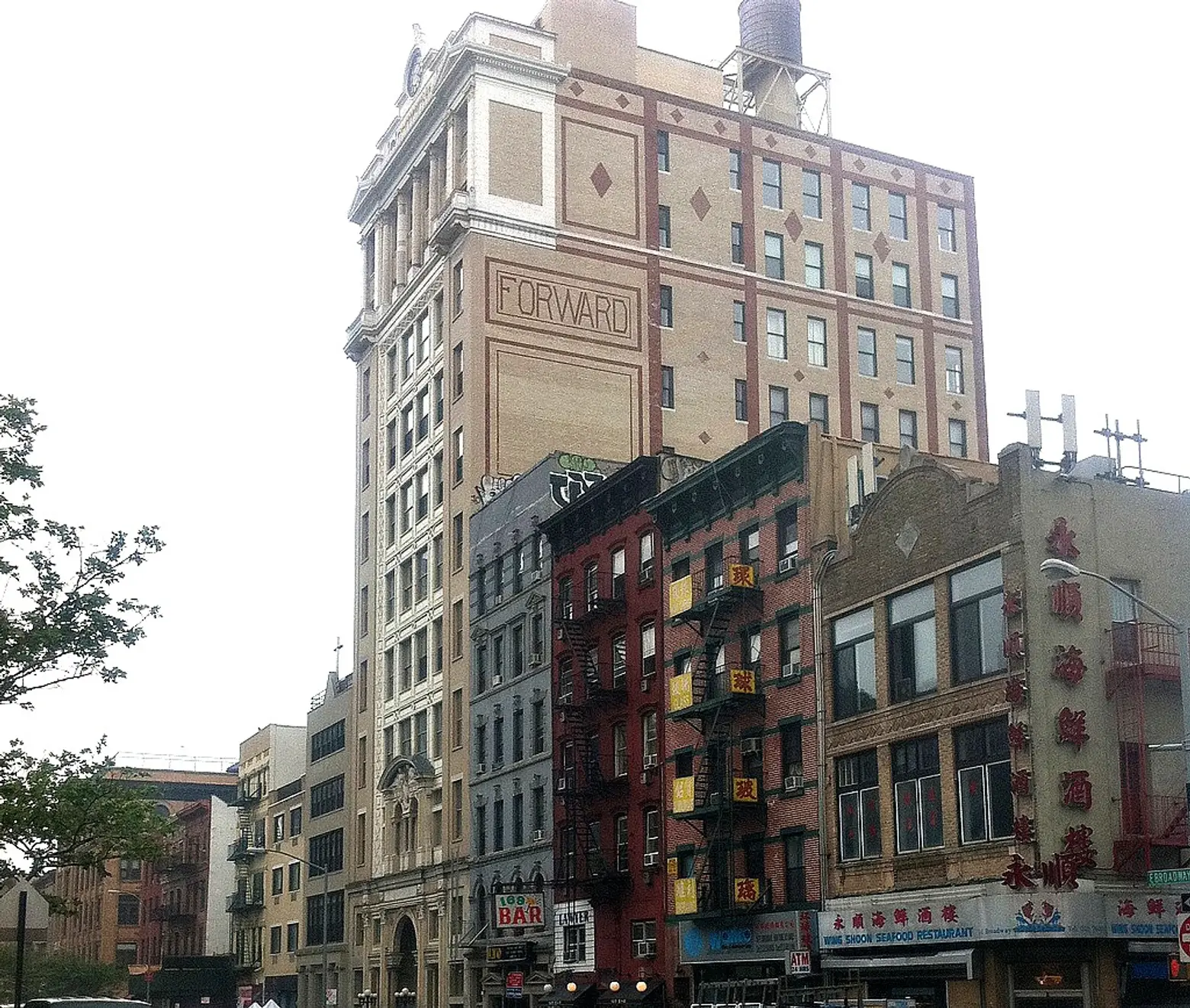 The Jewish Daily Forward Building on East Broadway via *hettie* via photopin cc
The Jewish Daily Forward Building on East Broadway via *hettie* via photopin cc
East of Canal Street the Jewish Lower East Side influence begins popping up on East Broadway, most notably with the Jewish Daily Forward building (now condos), the Downtown Hebrew Institute (now the Educational Alliance), and the Bialystoker Center. Today, there are still several synagogues and Jewish community centers along East Broadway.
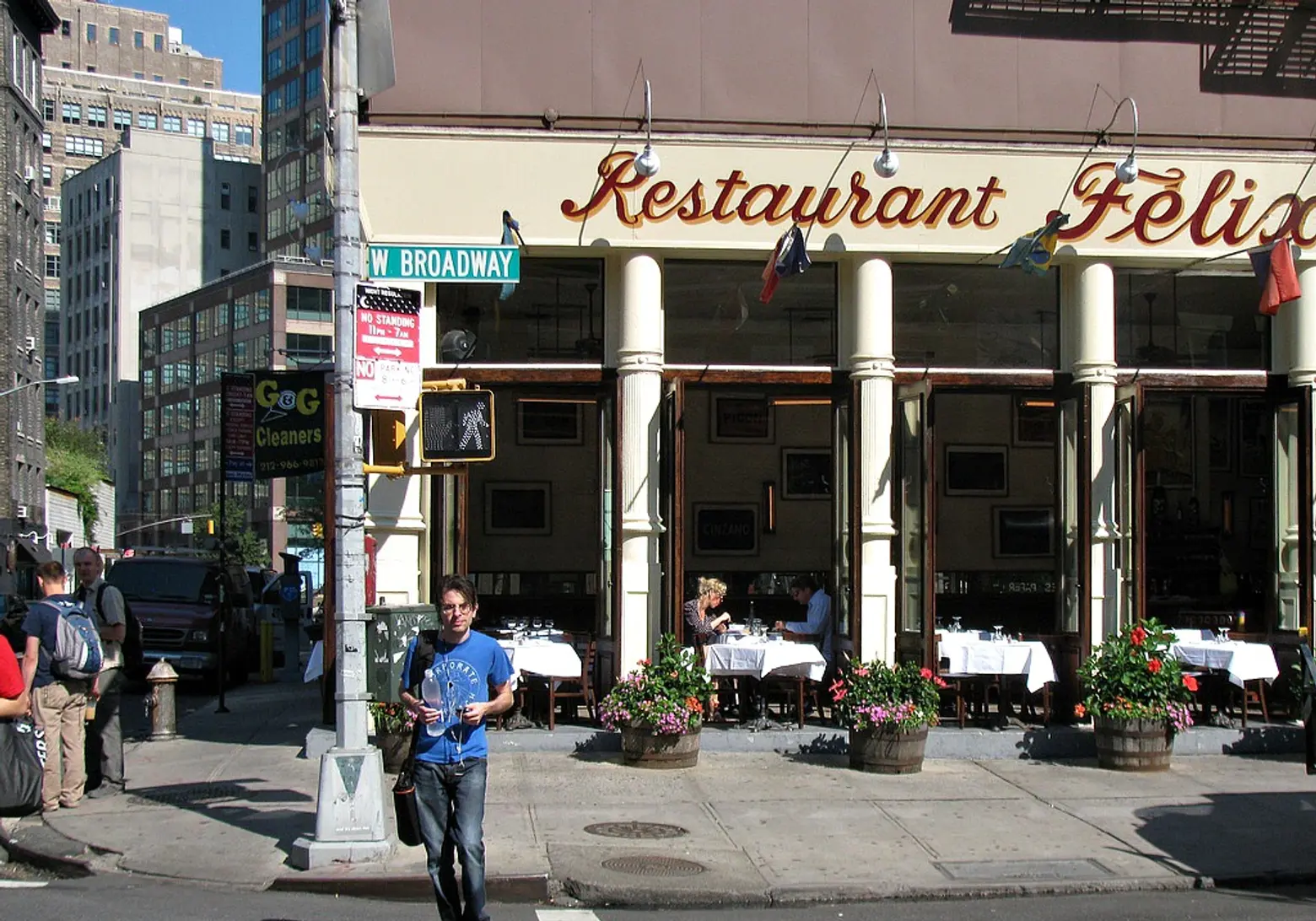 West Broadway at Grand Street via edenpictures via photopin cc
West Broadway at Grand Street via edenpictures via photopin cc
If you’ve gone shopping in Soho you’ve most likely walked on West Broadway, one of the ‘hood’s main retail thoroughfares. It wasn’t always so glamorous, though. Back in the 19th century, West Broadway was named Lauren’s Street, or, informally, Rotten Row. By the 1830s, houses of prostitution began moving into the street’s residential buildings. It quickly got the reputation of being an unsavory area, hence Rotten Row.
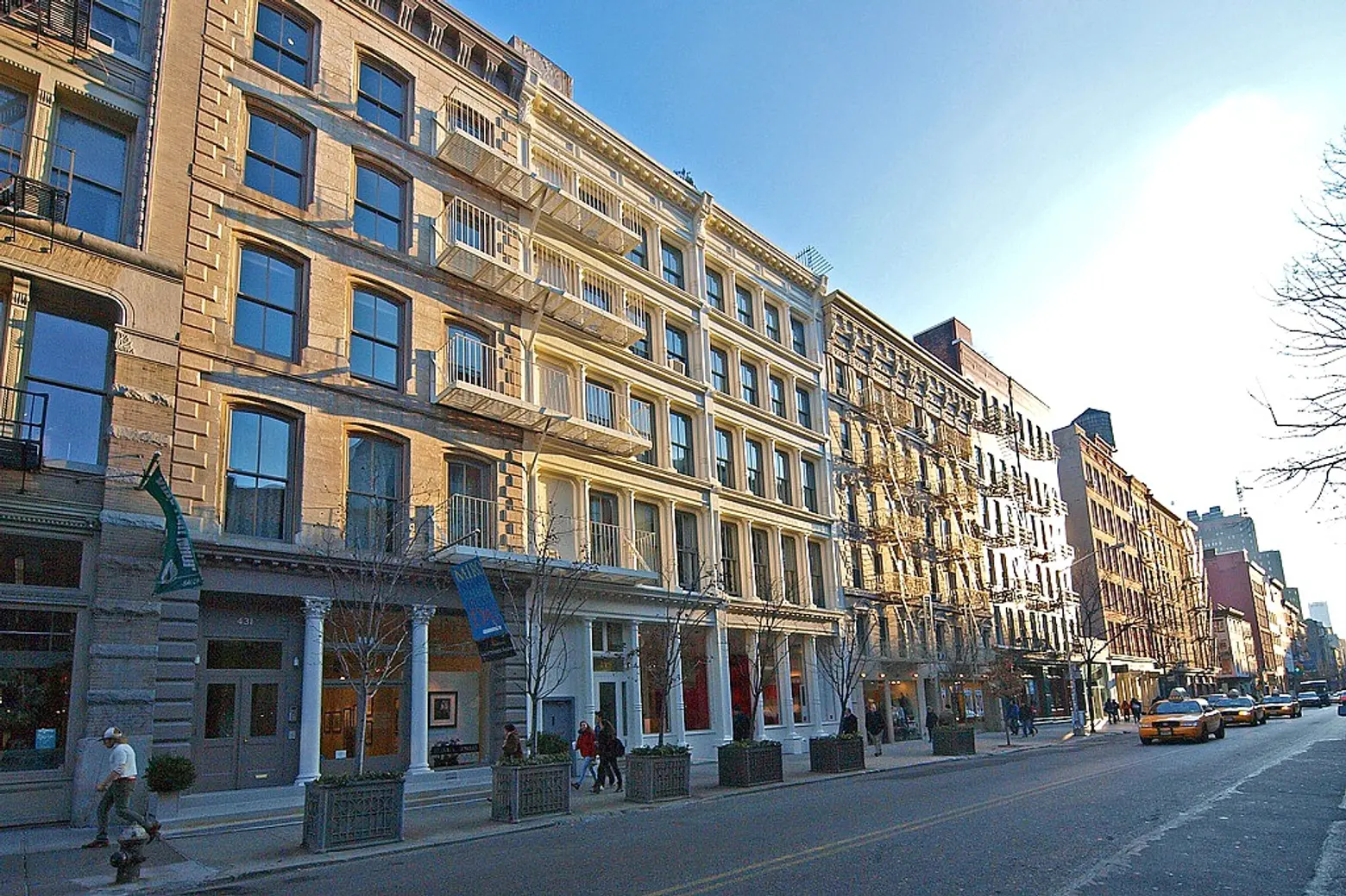 West Broadway via Steve Guttman NYC via photopin cc
West Broadway via Steve Guttman NYC via photopin cc
In the 1870s, the city changed the street’s name to South Fifth Avenue, hoping to gain some prestige, but it didn’t work. Beginning in the 1880s, the street hung in the shadows of the Sixth Avenue El, dark and full of soot. In 1896, Mayor William Strong took a cue from East Broadway and changed the name to West Broadway, but it wasn’t until much later in the 20th century that the street became the artsy, touristy spot we now know. West Broadway originally ran south from the World Trade Center site, but today terminates at Park Place, running north to Houston Street.
You might be wondering right now, “but I still don’t know why there are three Broadways in Manhattan,” and the truth is, it’s not really known. Most historians believe it was a combination of two reasons. First, the name Broadway had such prominence that it would attract people to the street, and second, people would by association think the streets were extensions of Broadway and be tricked, in a way, into traveling on them.
Stay tuned for part two of Street Fight, when we take a look at Broadways in the outer boroughs.
Get Insider Updates with Our Newsletter!
Leave a reply
Your email address will not be published.
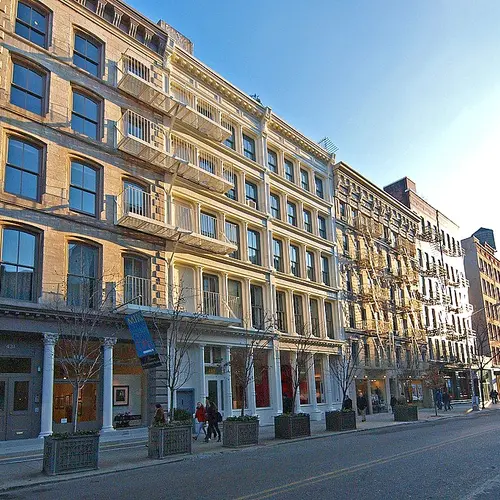
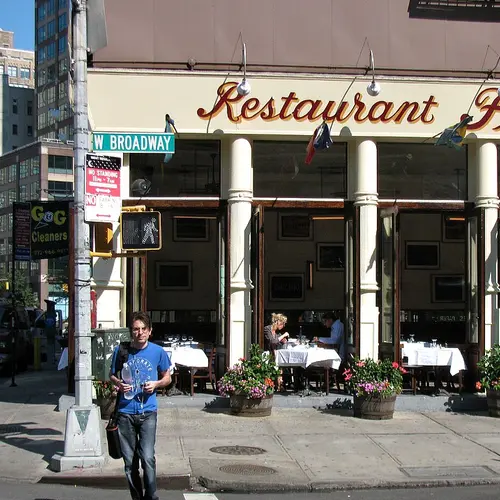
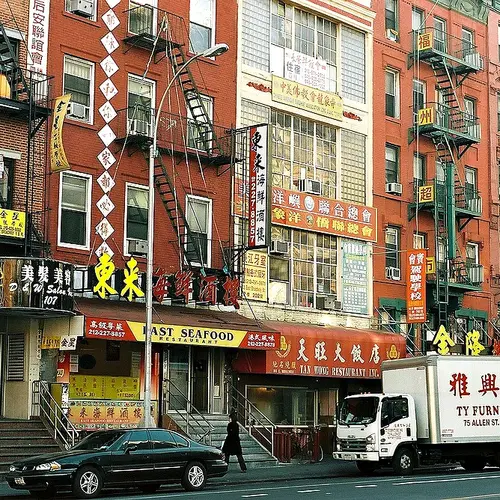
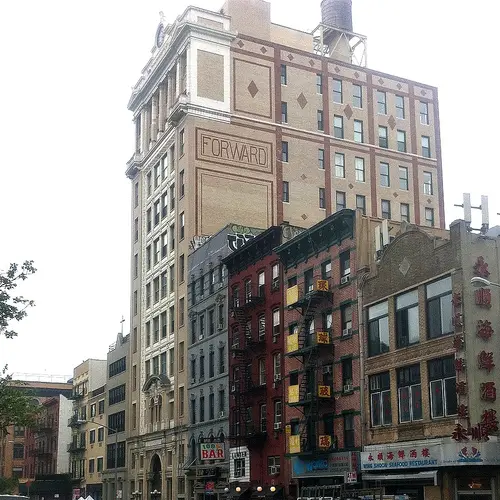
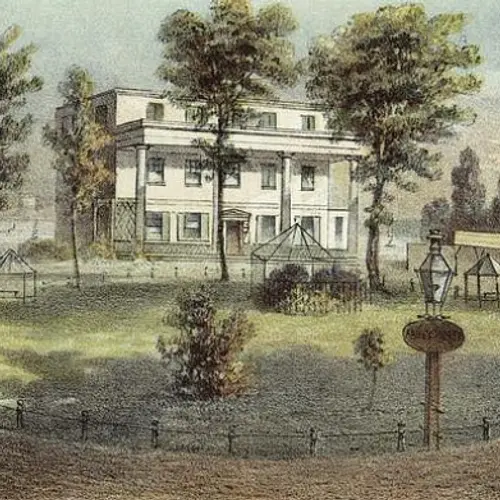











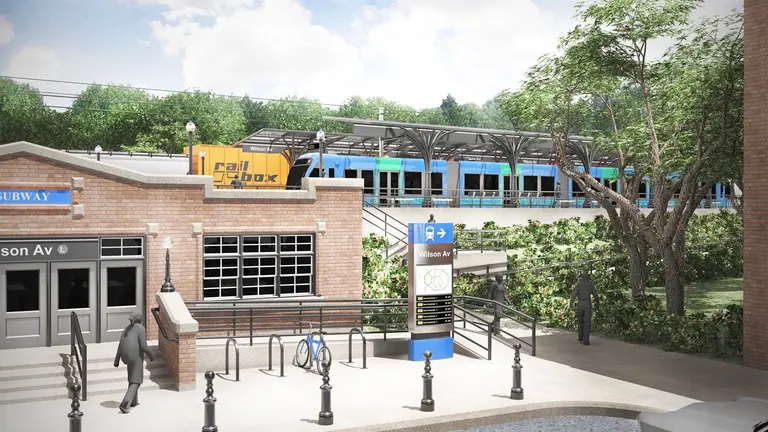
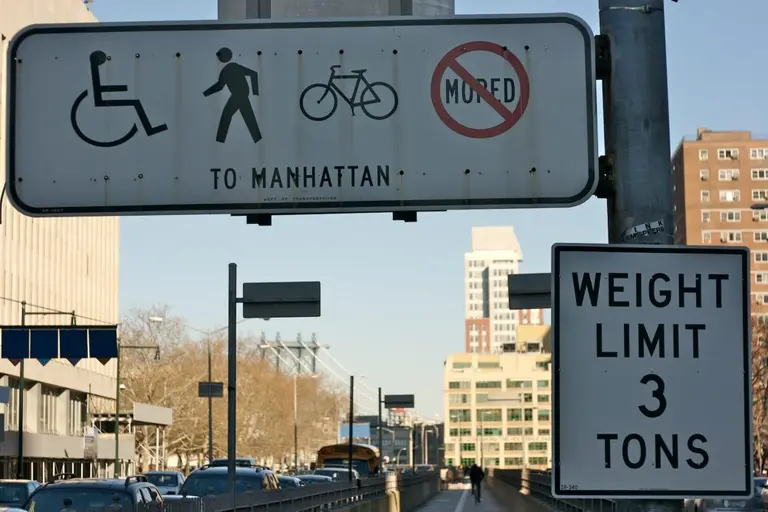














And don’t leave out “Old Broadway” in Harlem, which runs a few hundred feet between W. 125th and W. 129th after crossing W. 126th and turning east = https://www.google.com/maps/place/Old+Broadway+Synagogue/@40.815456,-73.95717,17z/data=!4m2!3m1!1s0x89c2f66a28c4f0e7:0xc78266428a4c2615?hl=en
It’s better than the 54 Peachtree’s in Atlanta.
What about Old Broadway! This article leaves out the fourth Broadway, in Manhattan
It runs from 125th to 133rd Street, one block west of Broadway. It was a bend in the original Bloomingdale Road, which later became Broadway. When the city widened and straightened the road, the bend was bypassed and Old Broadway remains its own little street.